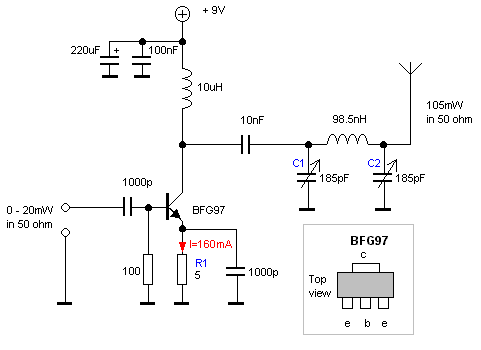This page investigates a simple PA for 50MHz.
This power amplifier will boost upp a low level signal about10-20mW
to over 100mW. The power consumption will yet be quit low.
At the bottom of this page I will present a complete transmitter based
on a crystal controlled VCO.
All contribution to this page are most welcome
 | ||
 |
||

